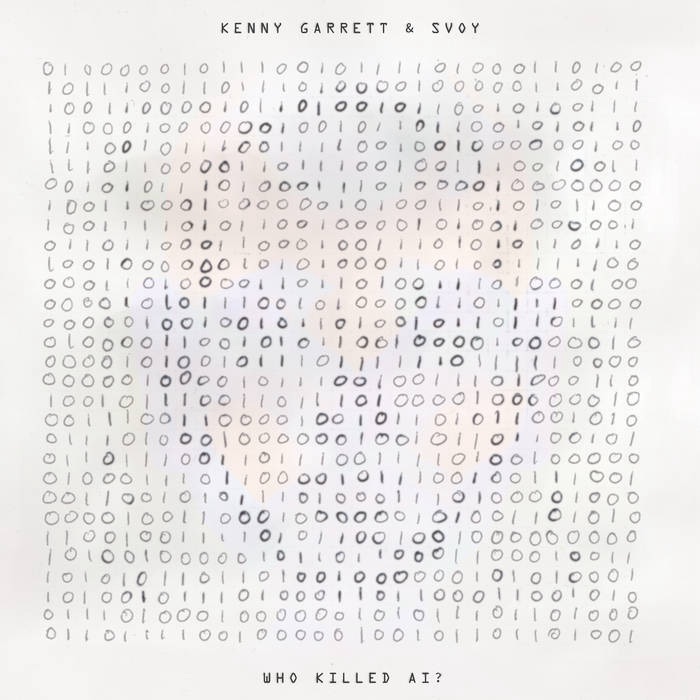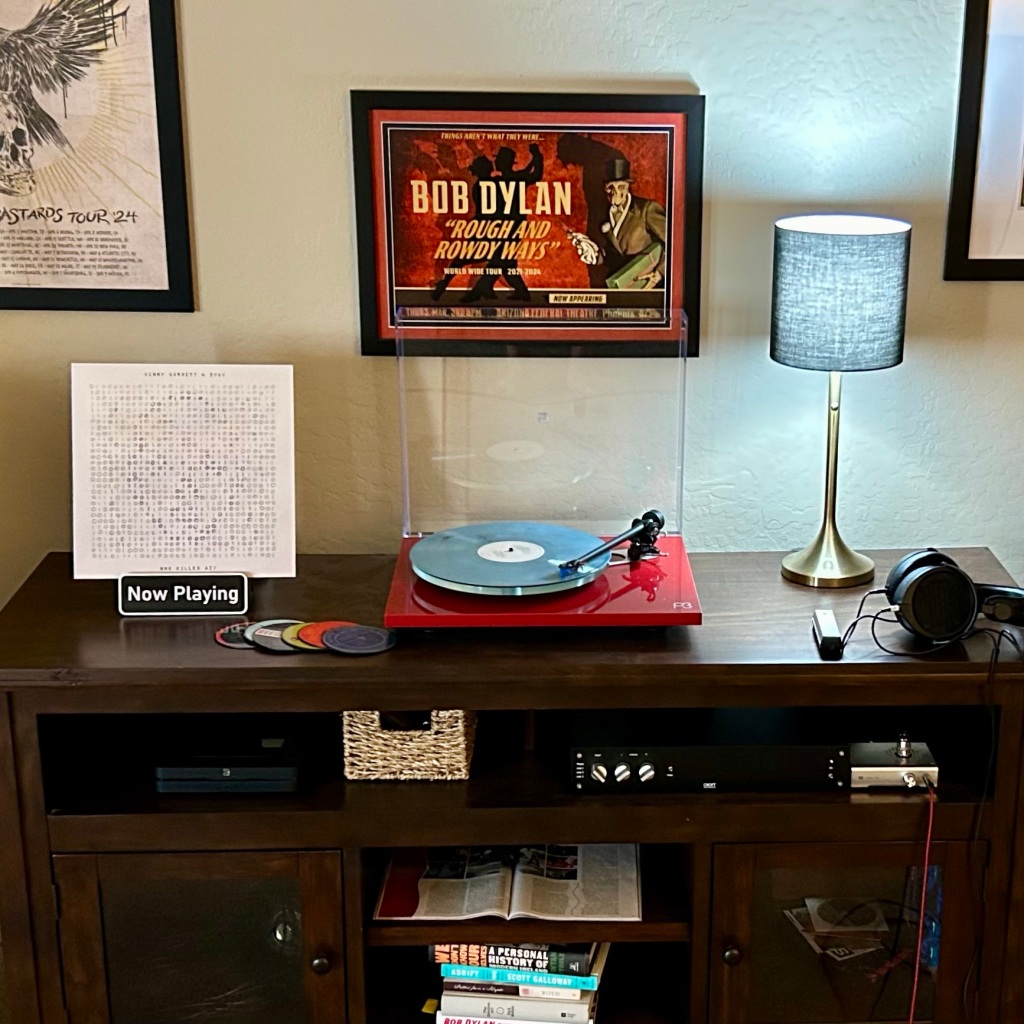Kenny Garrett & Svoy – Who Killed AI?

Who Killed AI?
Mack Avenue Records (2024)
I saw this album on the 2024 Record Store Day release list and have known of saxophonist Kenny Garrett via his time in the final Miles Davis band. He continued a solo career post-Miles, but did not followed it. This RSD 2024 blurb caught my attention”:
“For more than three decades, saxophonist Kenny Garrett has been on the forefront of the most adventurous and creative collaborations in jazz, having performed with generations of innovators such as Miles Davis, Art Blakey, Freddie Hubbard and more. The living legend charts yet another path in his illustrious career with the release of his first ever electronic album, an avenue to explore new sounds.”
“…his first ever electronic album” – I wondered what that would sound like, so I immediately went to my streaming service (Tidal) and listened. I fell for it immediately, and it shot to number one on the RSD 2024 vinyl record wish list.
The album’s back story is that Garrett and Mikhail Tarasov, AKA Svoy, are long-time collaborators who live close to each other in New Jersey. Per Garrett in a Stereogum article:
“Svoy was living, literally two minutes from me, and we just started collaborating,” Garrett said. “He would show up with his computer in my living room, and he would just have some music and didn’t have a melody, and so I would just listen to it. It was really relaxed. And I would just kind of create a melody and play off the top, just like that. Or he would come up with a melody and then I would hear something and say, well, I think we should do this. It was always like he was painting the canvas. But then I would say, ‘Why don’t you write me a song like what I did with Miles’… or I would say, ‘Write something like this, and then I’ll create a melody,’ or he’d send me something. I’d say, ‘Well, let’s change it a little bit here,’ you know, so it was just direction, but at the same time, just trying to be open.”

Svoy (programming, vocals, piano)
Garrett says in the Stereogum article that Pharoh Sanders’ final album with Floating Points (an album I love) was an inspiration.
“[Svoy] did a great job allowing that space for me to kind of create. And that’s what I’ve been trying to do for years. I’m still waiting to collaborate with other people [who were] writing some music with me in mind, you know, and let’s see what happens. Pharaoh did a record like that with Floating Points; I would love to have done something like that, but a lot of times people don’t know what you can do, so they never would call you for things like that. But I hope after this situation, people will be open to trying — ‘Oh, let me call Kenny Garrett. We could try something here or try something there.’ I mean, I’m just really trying to continue to grow as a musician and try things, you know?”
Side A opens with “Ascendence.” The song starts with a synth riff, then a backbeat, and Garrett’s imitation of Miles Davis’ raspy voice counting off. This is followed by a Garrett sax solo over a synth and electronic drum foundation. The song would not have sounded out of place on one of Miles’ final albums (which had hip-hop and what we call today EDM influences). An AllMusic review summarizes the track perfectly: “Garrett spirals to Svoy’s digital buzz and grind like John Coltrane plugging into the Matrix.”
The title of the next track, “Miles Running Down AI,” is a play on the Miles’ Bitches Brew classic “Miles Runs the Voodoo Down.” In Jazz Blues News, Garrett said the track answers the question: “What would Miles sound like if he played Coachella?” The Garrett track doesn’t sound like the Davis track – the Garrett track is hyperactive, whereas the Davis track is wonderfully lethargic. But the song indeed invokes the spirit of Miles Davis.
“Transcendence” opens like a trance—a simple electronic drum beat and melody on a synth that then transitions to Garrett’s sax. This song reminds me of the mid-70s Weather Report.
“Divergence Tu-dah” mixes a hip-hop groove, nonsense vocals (the “tu-dah” in the song title), and a highly processed sax.
Side B opens with “Ladies,” a percolating Garrett soprano sax solo over a bed of electronica.
“My Funny Valentine” turns a jazz standard (a regular song in Davis’ repertoire) into an electronic masterpiece.
On “Convergence,” Garrett crafts a playful melodic alto sax Svoy’s hyperkinetic beat. The song fades out with a Svoy scat vocal. This is the most accessible song on the album – start here if you are not willing to commit to the whole album.
The ghost of Miles Davis hangs over this album both in the sound (late period Miles) and in the experimentation (combining electronics and jazz). I experienced the late period Miles (which I define as 1981’s The Man With The Horn through 1992’s Doo-Bop) in real-time. I was grateful to have new Miles material then, but I didn’t appreciate it. Recently, I have gone back to that period and now love it. Garrett and Svoy’s concept of a Miles-inspired combination of jazz sax with electronica works is inspired – it sounds fresh but also honors the past. As for the album title, I guess Garrett and Svoy are daring artificial intelligence (AI) to create an album of this quality – they have set a high bar for AI to exceed.

Definitely on this one.